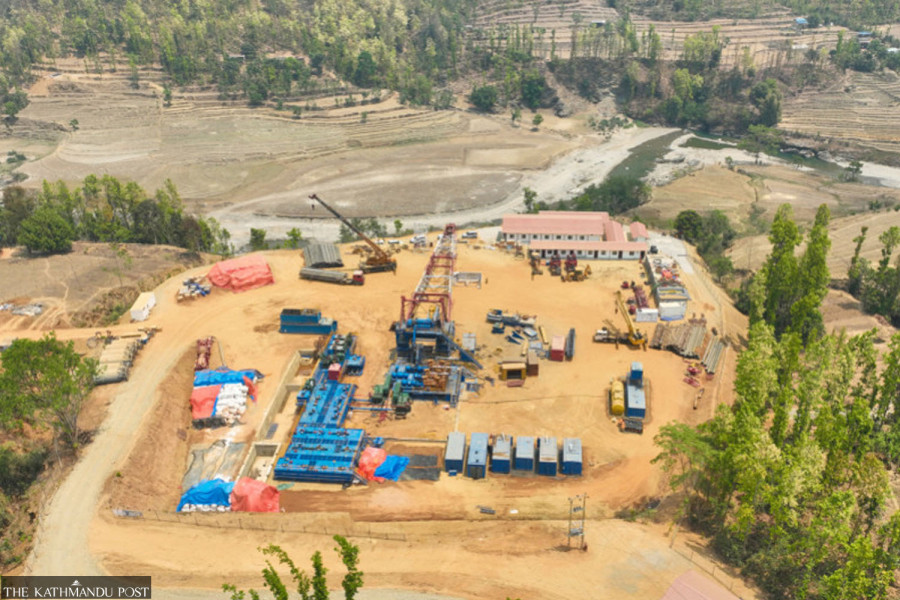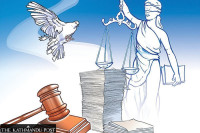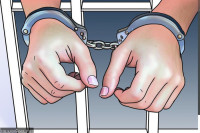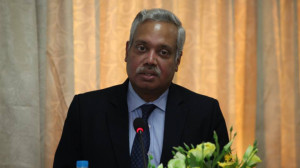National
Samples extracted for petroleum exploration in western Nepal
Chinese technicians will conduct lab tests and present a report on the viability of commercial extraction.
Binod Ghimire
In a significant breakthrough for the exploration of petroleum products in Nepal, a Chinese technical team has extracted rock samples after drilling over 4 kilometres beneath the surface in Jaljale of Bhairavi Rural Municipality, Dailekh.
The Chinese team, backed by Nepali experts, on Wednesday completed drilling 4,002 metres as per the plan. The drilling to extract samples reached a depth of 4,012 meters on Friday. The Department of Mines and Geology has hailed it as a “historic milestone”.
Monika Jha, spokesperson for the department, said two more studies, which would take a maximum of six months, will determine whether Nepal has an adequate reserve of oil and gas that are commercially viable to extract.
First, the shale and sandstone rock samples will be tested in Chinese labs to ascertain whether Dailekh has an adequate oil and gas reserve. While shale contains petroleum products, sandstone holds them in the rock.
“These samples will be sent to China within a week,” Jha told the Post. “The Chinese side has assured us of a report in four months.”
Once the report on the samples is submitted, the Chinese team will extract oil and gas samples to test their quality. Petroleum with high quantities of propane and butane is considered to be of good quality.
“It is clear that the area being explored has both gas and oil. However, we are unaware of their volume and quality,” she said. “Once the reports of both the tests are ready, we will know whether their extraction is commercially feasible.”
As per the 2019 bilateral agreement between the two countries, the exploration is being conducted with a Rs2.5 billion Chinese grant. The assistance amount doesn’t include the cost of lab tests, which will also be borne by the Chinese side.
In May 2016, a joint technical team from Nepal and China conducted a feasibility study on oil and gas exploration at 10 locations, including Dailekh, Nepalgunj, Chitwan, Mustang, Morang, Chatara and the Chure range in Palpa.
Following the feasibility study, the two countries signed a memorandum of understanding for the exploration during Chinese Vice-premier Wang Yang’s visit to Nepal in August 2017.
The Chinese technical team completed the seismic survey, geological survey, magnetotelluric survey and geochemical sampling before starting the drilling in May 2024. The Nepal government has acquired 45 ropanies of land for drilling in Jaljale in the country’s western part.
The China Geological Survey has been carrying out the exploration works along with the Xibu Drilling Engineering Company,.
Officials at the department say if both tests establish commercial viability of petroleum extraction, the Nepal government will decide how to move ahead. It can have a government-to-government agreement with a country of its choice or invite international companies through global bidding to extract the hydrocarbons.
“It will be natural for China to ask that it be allowed to carry out extraction as it is conducting the exploration on grants,” said a government official. “However, we have not given any word, nor have we forged any agreement to this effect. The Nepal government is free to go any way it wants.”
Nepal embarked on petroleum exploration in the late 1990s. Since then a number of foreign companies have expressed interest in conducting studies and were subsequently given exploration permits.
However, citing the slow work of the foreign companies that received licences from the department, the government cancelled all the licences three years ago.
Texana Resources Company and BBB Champion of the US, Cairn Energy PLC of the UK and Emirates Associated Business Group (EABG) of Dubai, UAE were among the companies that lost their working licences.
Nepal is entirely dependent on petroleum imports. Fossil fuels make up the highest share of imports, worth over Rs305 billion in the previous fiscal year.




 10.12°C Kathmandu
10.12°C Kathmandu















